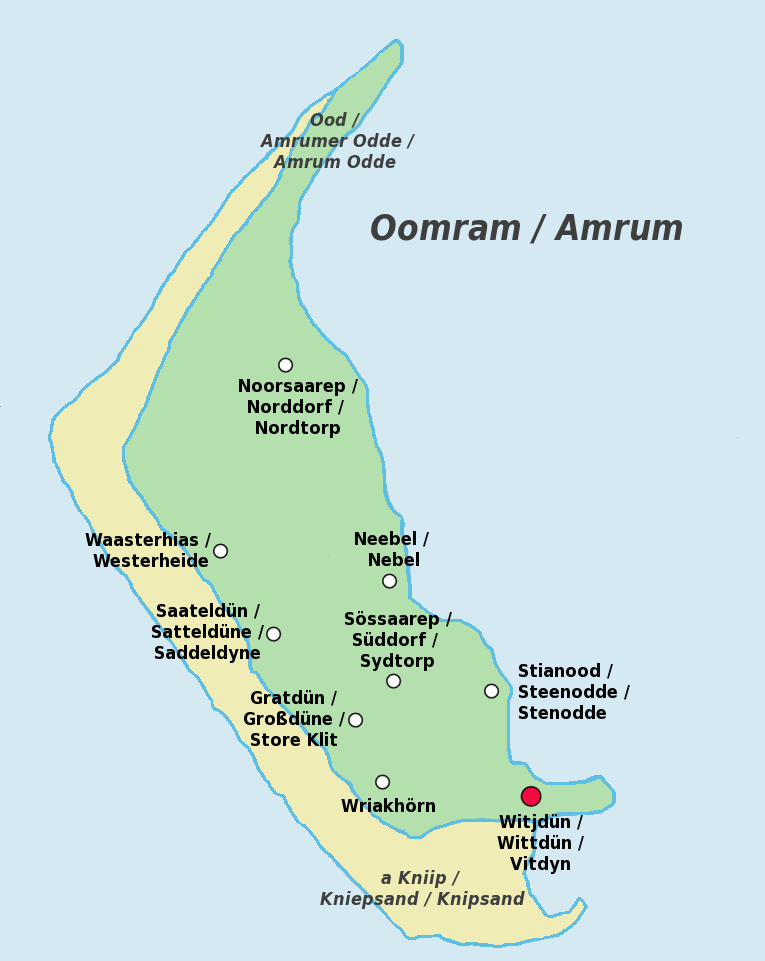|
Schleswig-Holstein Geest
The Schleswig Geest or Schleswig-Holstein Geest ( or ''Schleswigsche Geest'', ) is one of the three landscape types in the north German state of Schleswig-Holstein; the others being the coastal marshland to the west and the Schleswig-Holstein Uplands to the east. The geest region, which is also referred to as the central ridge of Schleswig-Holstein, stretches as the '' High Geest'' (''Hohe Geest'') from the Danish border in a wide strip past Bredstedt, Hohenwestedt and Itzehoe to the Hamburg area and to Lauenburg. Between the marshes of North Frisia and Dithmarschen and the ''High Geest'' lies the so-called ''Fore-Geest'' (''Vorgeest'') as a narrow strip, which extends inland roughly in the area of Owschlag.Information from the Schleswig-Holstein State Office for Agriculture, Environment and Rural Areas''The soils of Schleswig-Holstein. Origin, Distribution, Use, Properties and Endangerment.'' pp. 73 ff., pdf, retrieved on 24 January 2018. In the western lowlands there are isolated ... [...More Info...] [...Related Items...] OR: [Wikipedia] [Google] [Baidu] |
Schleswig-Holstein
Schleswig-Holstein (; ; ; ; ; occasionally in English ''Sleswick-Holsatia'') is the Northern Germany, northernmost of the 16 states of Germany, comprising most of the historical Duchy of Holstein and the southern part of the former Duchy of Schleswig. Its capital city is Kiel; other notable cities are Lübeck and Flensburg. It covers an area of , making it the 5th smallest German federal state by area (including the city-states). Historically, the name can also refer to a larger region, containing both present-day Schleswig-Holstein and the former South Jutland County (Northern Schleswig; now part of the Region of Southern Denmark) in Denmark. Schleswig, named South Jutland at the time, was under Danish control during the Viking Age, but in the 12th century it became a duchy within Denmark due to infighting in the Danish Royal House. It bordered Holstein, which was a part of the Holy Roman Empire. Beginning in 1460, the King of Denmark ruled both Schleswig and Holstein as the ... [...More Info...] [...Related Items...] OR: [Wikipedia] [Google] [Baidu] |
Invent
An invention is a unique or novel device, method, composition, idea, or process. An invention may be an improvement upon a machine, product, or process for increasing efficiency or lowering cost. It may also be an entirely new concept. If an idea is unique enough either as a stand-alone invention or as a significant improvement over the work of others, it can be patented. A patent, if granted, gives the inventor a proprietary interest in the patent over a specific period of time, which can be licensed for financial gain. An inventor creates or discovers an invention. The word ''inventor'' comes from the Latin verb ''invenire'', ''invent-'', to find. Although inventing is closely associated with science and engineering, inventors are not necessarily engineers or scientists. The ideation process may be augmented by the applications of algorithms and methods from the domain collectively known as artificial intelligence . Some inventions can be patented. The system of patents was ... [...More Info...] [...Related Items...] OR: [Wikipedia] [Google] [Baidu] |
Natural Regions Of Germany
This division of Germany into major natural regions takes account primarily of geomorphological, geological, hydrological, and pedological criteria in order to divide the country into large, physical units with a common geographical basis. Political boundaries play no part in this, apart from defining the national border. In addition to a division of Germany by ''natural regions'', the federal authorities have also produced a division by so-called ''landscape areas (Landschaftsräume)'' that is based more on human utilisation of various regions and so has clearly different boundaries. Groundwork by the Federal Institute of Regional Studies (BfL) The natural region classification of Germany, as used today by the Federal Office for Nature Conservation (''Bundesamt für Naturschutz'' or BfN) and by most state institutions, is largely based on the work in producing the Handbook of Natural Region Divisions of Germany between the years 1953 to 1962. This divided the present federal te ... [...More Info...] [...Related Items...] OR: [Wikipedia] [Google] [Baidu] |
Heide-Itzehoe Geest
The Heide-Itzehoe Geest () is a division of a larger natural region in the west of the German state of Schleswig-Holstein. It belongs to the Hohe Geest and thus to the Schleswig-Holstein Geest natural region. It covers an area of 1,182 square kilometres.''Heide-Itzehoer Geest'' at bfn.de. Retrieved 31 January 2023. The Heide-Itzehoe Geest was pushed up during the and so belongs to the geologically oldest areas in the state. The region lies south of the , east of the Dithmarsch and [...More Info...] [...Related Items...] OR: [Wikipedia] [Google] [Baidu] |
Sylt
Sylt (; ; Söl'ring North Frisian: ) is an island in northern Germany, part of Nordfriesland district, Schleswig-Holstein, with a distinctively shaped shoreline. It belongs to the North Frisian Islands and is the largest island in North Frisia. The northernmost island of Germany, it is known for its tourist resorts, notably Westerland, Kampen and Wenningstedt-Braderup, as well as for its sandy beach. It is frequently covered by the media in connection with its exposed situation in the North Sea and its ongoing loss of land during storm tides. Since 1927, Sylt has been connected to the mainland by the Hindenburgdamm causeway. In later years, it has been a resort for the German jet set and tourists in search of occasional celebrity sightings. Geography With , Sylt is the fourth-largest German island and the largest German island in the North Sea. Sylt is located from off the mainland, to which it is connected by the Hindenburgdamm. Southeast of Sylt are the islands ... [...More Info...] [...Related Items...] OR: [Wikipedia] [Google] [Baidu] |
Föhr
Föhr (; ''Fering'' North Frisian: ''Feer''; ) is one of the North Frisian Islands on the German coast of the North Sea. It is part of the Nordfriesland district in the federal state of Schleswig-Holstein. Föhr is the second-largest North Sea island of Germany and a popular destination for tourists. A town and eleven distinct municipalities are located on the island. The climate is oceanic with moderate winters and relatively cool summers. Being a settlement area already in Neolithic times, Föhr had been part of mainland North Frisia until 1362. Then the coastline was destroyed by a heavy storm flood known as Saint Marcellus's flood (, 'Great Drowning of Men') and several islands were formed, Föhr among them. The northern parts of Föhr consist of marshes while the southern parts consist of sandy geest. From the middle-ages until 1864, Föhr belonged to the Danish realm and to the Duchy of Schleswig, but was then transferred to Prussia as a result of the Second Schleswig Wa ... [...More Info...] [...Related Items...] OR: [Wikipedia] [Google] [Baidu] |
Amrum
Amrum (; Öömrang, ''Öömrang'' North Frisian: ''Oomram'') is one of the North Frisian Islands on the Germany, German North Sea coast, south of Sylt and west of Föhr. It is part of the Nordfriesland district in the federal state of Schleswig-Holstein and has approximately 2,300 inhabitants. The island is made up of a sandy core of geestland and features an extended beach all along its west coast, facing the open North Sea. The east coast borders to mudflats of the Wadden Sea. Sand dunes are a characteristic part of Amrum's landscape, resulting in a vegetation that is largely made up of heath and shrubs. The island's only forest was planted in 1948. Amrum is a refuge for many species of birds and a number of marine mammals including the grey seal and harbour porpoise. Settlements on Amrum have been traced back to the Neolithic period when the area was still a part of the mainland of the Jutland peninsula. During the Middle Ages, Frisians, Frisian settlers arrived at Amrum and e ... [...More Info...] [...Related Items...] OR: [Wikipedia] [Google] [Baidu] |
Angeln
Angeln (; ) is a peninsula on the Baltic Sea, Baltic coast of Jutland, in the Bay of Kiel. It forms part of Southern Schleswig, the northernmost region of Germany. The peninsula is bounded on the north by the Flensburg Firth, which separates it from Sundeved and the island of Als (island), Als in Denmark, and on the south by the Schlei, which separates it from Schwansen. The landscape is hilly, dotted with numerous lakes. The largest towns are Flensburg, Schleswig, Schleswig-Holstein, Schleswig and Kappeln. Angeln is notable for being the putative home of the Angles (tribe), Angles, a Germanic tribe that migrated to Great Britain during the Age of Migrations and founded the kingdoms of Mercia, Northumbria and Kingdom of East Anglia, East Anglia. The Angles would ultimately give their name to England. Glücksburg Castle in Glücksburg and Gottorf Castle in Schleswig were the original seats of two historically important dynasties, the House of Glücksburg and the House of Holstei ... [...More Info...] [...Related Items...] OR: [Wikipedia] [Google] [Baidu] |
North European
The northern region of Europe has several definitions. A restrictive definition may describe northern Europe as being roughly north of the southern coast of the Baltic Sea, which is about 54°N, or may be based on other geographical factors such as climate and ecology. Climate The climate is mainly Oceanic climate (Cfb), Humid continental climate (Dfb), Subarctic climate (Dfc and Dsc) and Tundra (ET). Geography Northern Europe might be defined roughly to include some or all of the following areas: British Isles, Fennoscandia, the peninsula of Jutland, the Baltic plain that lies to the east, and the many islands that lie offshore from mainland northern Europe and the main European continent. In some cases, Greenland is also included, although it is only politically European, comprising part of the Kingdom of Denmark, and not considered to be geographically in Europe. The area is partly mountainous, including the northern volcanic islands of Iceland and Jan Mayen, and the m ... [...More Info...] [...Related Items...] OR: [Wikipedia] [Google] [Baidu] |
Jutes
The Jutes ( ) were one of the Germanic people, Germanic tribes who settled in Great Britain after the end of Roman rule in Britain, departure of the Roman Britain, Romans. According to Bede, they were one of the three most powerful Germanic nations, along with the Angles (tribe), Angles and the Saxons: There is no consensus amongst historians on the origins of the Jutes. One hypothesis is that they originated from the Jutland Peninsula but after a Danish invasion of that area, migrated to the Frisian coast. From the Frisian coast they went on to settle southern Britain in the later fifth century during the Migration Period, as part of a larger wave of Germanic migration into Britain. They were possibly or probably related to the North Germanic tribe Geats. Settlement in southern Britain During the period after the Roman Britain, Roman occupation and before the Norman conquest, people of Germanic descent arrived in Britain, ultimately forming England. The ''Anglo-Saxon Chr ... [...More Info...] [...Related Items...] OR: [Wikipedia] [Google] [Baidu] |
Danes (Germanic Tribe)
The Danes were a North Germanic tribe inhabiting southern Scandinavia, including the area now comprising Denmark proper, northern and eastern England, and the Scanian provinces of modern-day southern Sweden, during the Nordic Iron Age and the Viking Age. They founded what became the Kingdom of Denmark. The name of their realm is believed to mean " Danish March", viz. "the march of the Danes", in Old Norse, referring to their southern border zone between the Eider and Schlei rivers, known as the Danevirke. Origins The origin of the Danes remains undetermined, but several ancient historical documents and texts refer to them and archaeology has revealed and continues to reveal insights into their culture, cultural beliefs, beliefs organization and way of life. A 2025 study in ''Nature'' found genetic evidence of an influx of central European population after about 500 AD into the region later ruled by the Danes. The Danes first appear in written history in the 6th century wit ... [...More Info...] [...Related Items...] OR: [Wikipedia] [Google] [Baidu] |








